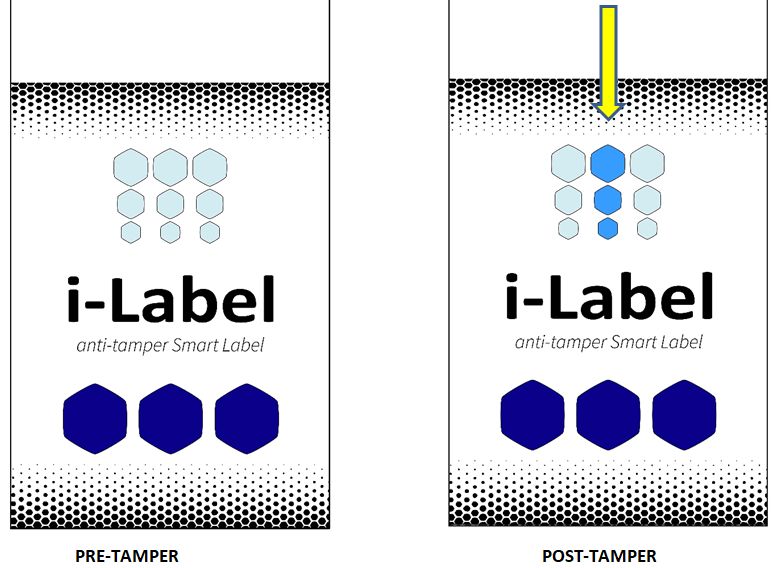Printed electronics makes it possible to change traditional labels from static objects into dynamic systems capable of adapting their message as a result of interactions with the outside world or through logic functions integrated into the labels.
As a key feature, this technology does not require an external infrastructure in order to operate. Other solutions, for instance based on QR codes or RFID tags require an interaction mediated by an external reading device (a mobile phone in case of QR codes).
Thanks to printed electronics, smart labels are independent and self-sufficient, allowing this technology to be more widespread and for the costs connected to this infrastructure to decrease significantly.
Benefits
The benefits involve all members of the supply chain, from printer to consumer.
- Printers will have the opportunity to offer a wider range of excellent solutions and will bring attention to the innovation of the physical product itself (the tools required to manufacture the smart, anti-tamper labels are similar to those required for traditional labels).
- Brand-owners will have a new marketing channel integrated into the product, to increase its quality and the interaction with the consumer, from the physical point of sale onwards. Moreover, they will have a new control system over the value and reliability of the supply chain, from the factory to the point of sale. In fact, the label communicates and tracks any unwanted event and/or events deemed crucial to preserve the quality of the product.
- Consumers will be able to directly verify product integrity, compliance with storage conditions and certificate of origin (it is very difficult to counterfeit smart labels). They will also have easy access to all the dynamically updated information on the product.
- The new labels, as opposed to the RFID ones, do not require microchips (which are not environmentally friendly). The mono-material approach drives the experimental process revolving around the same materials used for packaging manufacture, in order to allow easier recycling and reduce their environmental impact.
The prototype: i-Label
The smart label prototype is equipped with an anti-tampering feature: the label changes graphically after the package on which the label is applied is opened, thus breaking the label itself.
The printed electronics elements needed are at least 2:
- Photovoltaic cell: source of power allowing the label to generate its own energy
- Dynamic graphic element, which can show that the product has been tampered with through an electrochromic display, i.e. a printed device changing colour in response an electrical impulse.

Industrial process
The tools needed to manufacture the anti-tamper smart label are similar to those needed to manufacture the traditional ones.
Research and Innovation Hub
i-Label ranked third in the “Hub Research and Innovation” call for proposals of Regione Lombardia.
The call, carried out under the POR FESR 2014-2020 tender, with the contribution of resources from the European Union, Italy and Regione Lombardia, was aimed at strategic research, development and innovation projects.
The event marking the conclusion of this initiative has involved, in addition to Ferrarini & Benelli, Fedrigoni Self-Adhesives, the Italian Institute of Technology, ILTI, Omet and VDGlab. The event was live-streamed on the 18th of February.
Hub Printed Electronics
The Hub is aimed at providing the supply chains with the adequate tools to develop new and solid applications of Printed Electronics.
Video
- i-Label: antitamper smart label prototype
- i-Label: industrial process